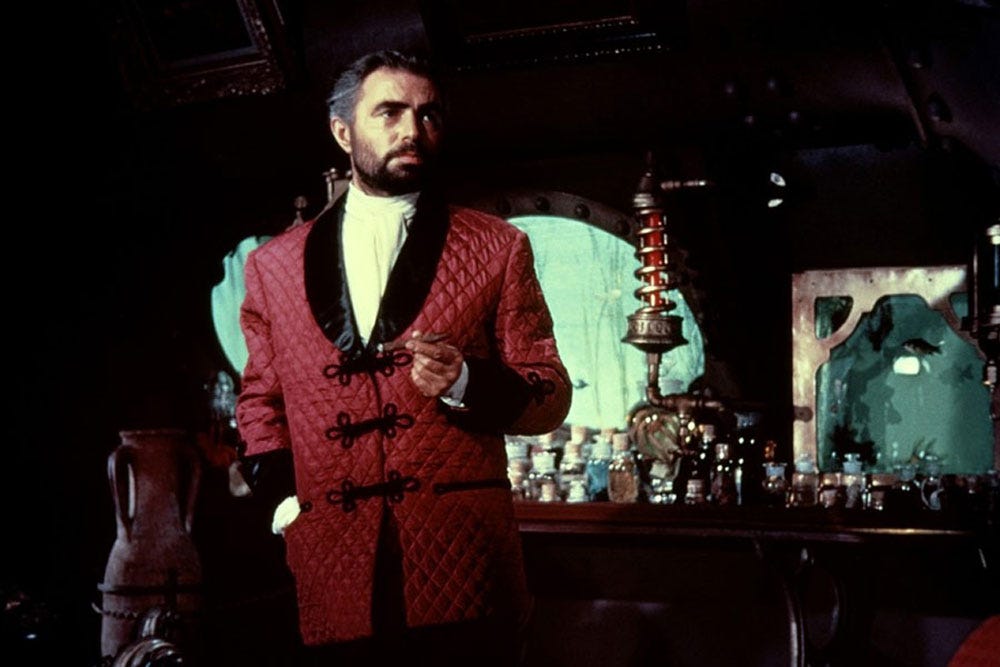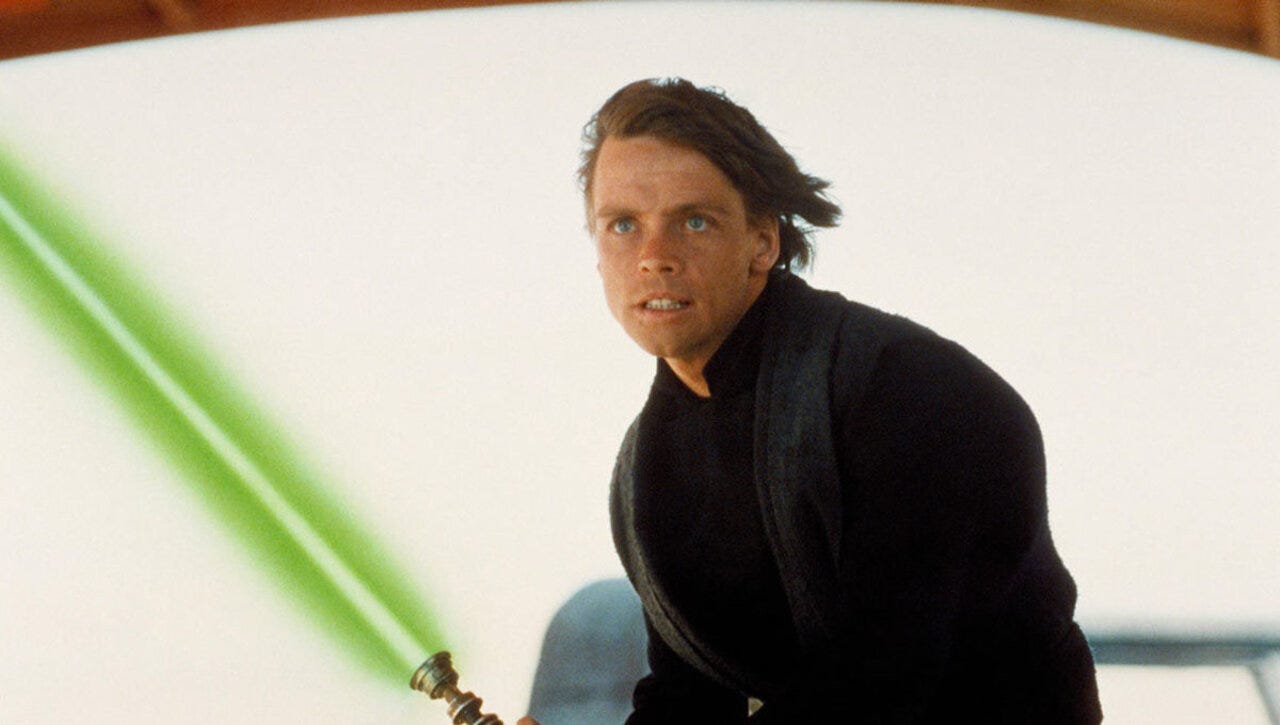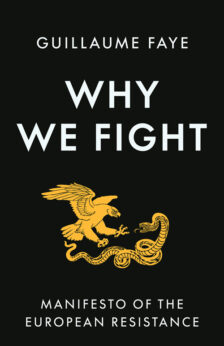You may very well find yourself feeling like Gary Cooper’s character in the masterpiece of Western cinema High Noon (1952), who must face an impossible fight alone when, one by one, his fellow townsfolk abandon him out of cowardly self-interest. You feel like him because it’s 2024. You’re an atomized “individual” at the endgame of Western civilization, and your friends just don’t see things the way you do.
But is the cowboy archetype, with its rugged self-reliance, a viable guiding spirit for the present circumstances? It might be a century or two from now, living an agrarian life far from the fallen world. But the cowboy archetype belongs to an untamed frontier, and we live in a post-civilizational dystopia. Very well, are there gods to guide us? Certainly not like the ones in Jason and the Argonauts (1963), who formed a community with men in an ordered cosmos.

‘Jason and the Argonauts’ (1963)
No, in the Kali Yuga, as Julius Evola explicates throughout his work, all contact with the supra-individual ordering force known as Tradition has been severed. This means you’re on your own, and for “aristocrats of the soul” — Evola’s term for the differentiated man living through the age of mass recollectivization — finding a suitable archetype to serve as a model is vital. For you’re being forced to rise above the ruins and reach the inward state in which the decadent society in which you live no longer fills you with anger, sorrow and fear. You have already vanquished this three-headed beast of negative emotion within your soul, and have affirmed where you are on the timeline of history and accepted conditions as they actually are, not as you remember they once were or would wish them to be.
Employing the West’s last great artistic invention of cinema, let’s examine some possibilities upon which to model one’s inner self, when going about everyday life requires superhero levels of adaptation. We know movie characters so well that deep in your soul your favorite hero has surely burned his way into your living light. This is the place to start the conscious quest for a character who is not a mere fantasy, but a viable model for the inner struggle of life during the Kali Yuga. But you’ll find that the farther you go and higher you evolve, the more this guiding avatar will change, often revealing itself in the most unexpected of places and strangest of guises.
But first, let us look at Evola’s aristocrat of the soul trying to keep his head above water amid the flood of the demonic masses, who is sketched in the opening pages of Ride the Tiger. This man is a “particular human type” who “feels himself, in essence, as belonging to a different race from that of the overwhelming majority of his contemporaries.” His situation is such that “[t]here no longer exist the organizations and institutions that, in a traditional civilization and society, would have allowed him to realize himself wholly, to order his own existence in a clear and unambiguous way, and to defend and apply creatively in his own environment the principal values that he recognizes within himself.”
In the age of crisis, the challenge becomes finding a suitable attitude to assume in the face of a society in ruin, and “on what terms one can accept situations of utter dissolution without being inwardly touched by them.”
What familiar character might fit this situation? We could start with James Bond, but he won’t get us far. Bond belongs to a mid-20th-century bourgeois escapist fantasy. Bond may fight supervillains, but he works for the government, and today the government is on the side of the supervillains. Jack Reacher, in the Tom Cruise film, is a better model, being a lone wolf called on to restore order and justice behind the scenes. For intellectual explorers, Indiana Jones goes off on adventures in which he encounters the supernatural dimension, but he has become tainted as the postwar world order has increasingly come into question. For a villain who looks heroic to us now, we might consider James Mason as the disenchanted underwater-dwelling Captain Nemo in 20,000 Leagues Under the Sea (1954), living out his revolt against the modern world. And while we’re at sea, the pirate archetype provides us with a lone wolf living outside society, as does Robin Hood. Such figures are certainly more germane to present conditions than a knight backed by king and kingdom, since you have neither.

James Mason in ‘20,000 Leagues Under the Sea’ (1954)
But these men are “all too human,” to use Nietzsche’s term, and not really archetypes in the supra-human sense. Bruce Wayne chooses an “elemental” symbol for his alter ego as Batman. This figure kindles our imagination, which operates at a higher level of reality, precisely what we want. But then it plunges back to earth in the role of vigilante, and we all know what happens today to would-be heroes who intervene in street crime.
Hugh Jackman in Van Helsing is a good guide, as the world in which he exists is a metaphysical showdown between good and evil. He is a tough man of action but assisted by a smart friar and backed by a clandestine spiritual brotherhood. When asked whether he’s a murderer or a holy man, Van Helsing says he’s probably a little of both.
Descended from Siegfried, Luke Skywalker is an archetypal figure straight from Germanic legend; he is also a superb example of Heroic Spirituality in the age of decadence, being called to learn the ways of the Force when the order of spiritual knights is nearly extinct and no one believes in the divine power anymore. This is a noble undertaking, very Evolian, and essentially the highest thing you can aim for during an earthly guise in the Kali Yuga. All effort is aimed towards acquiring a spiritual virility beyond life and death, so that one can simply release one’s mortal coil the way Obi-Wan Kenobi does, knowing one will simply transition into a freer and more powerful state of being.

Luke Skywalker
But Luke’s story takes place at the center of the arena of action in his world, while your spiritual quest will be done in anonymity. “They live on spiritual heights,” Evola writes of the aristocrats of the soul. “They do not belong to this world.” You can, of course, take to writing articles such as this one, preserving the Tradition through writing, which is largely how the torch is passed anyway.
That’s probably enough to get your subconscious working, that part of you which is both metaphysical and practical at the same time, or what we might call immanent and transcendent. Mankind has always had myths and stories to teach difficult lessons, including the inevitable encounter with malevolence. Search your heart for what has taken deep root there, but be open to new archetypal discoveries. As I suggested earlier, these may eventually take you back to something that was there all along, which you had overlooked in your ignorance, but which you’re now able to see.
As for myself, I was able to find a model who encapsulates a lifetime of the soul’s aspirations. This figure is noble — an important Traditional symbol — lives aloof from the world, is refined and elegant but also a tenacious explorer of the unknown and a competent fighter. This person has knowledge of ancient civilizations and metaphysical principles, and deliberately goes in search of forgotten wisdom and lost objects, which bring direct encounters with supernatural forces. All this is rather like what’s available on the path of initiation during the age of dissolution, if you understand that the adventures undertaken lead to books of ancient wisdom, and the exotic destinations are the great mysteries of man the microcosm.
I’ll leave you to guess who it is.
Christian Chensvold is the author of Dark Stars: Heroic Spirituality in the Age of Decadence, which reveals the influence of Julius Evola’s esoteric writings.







